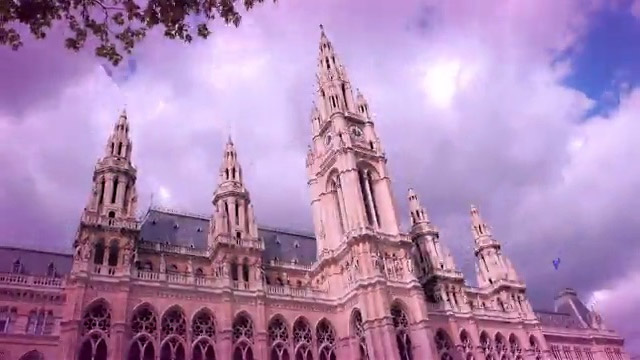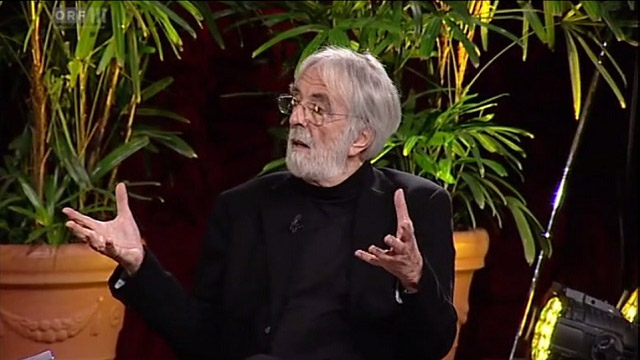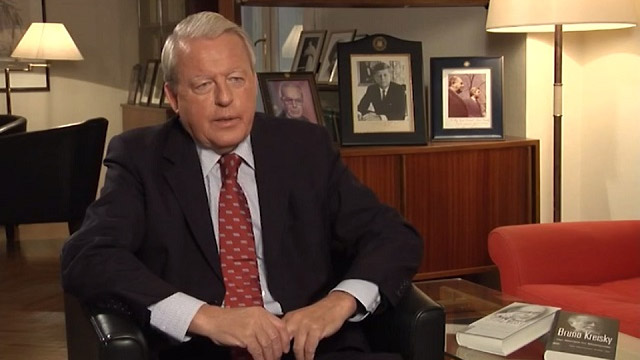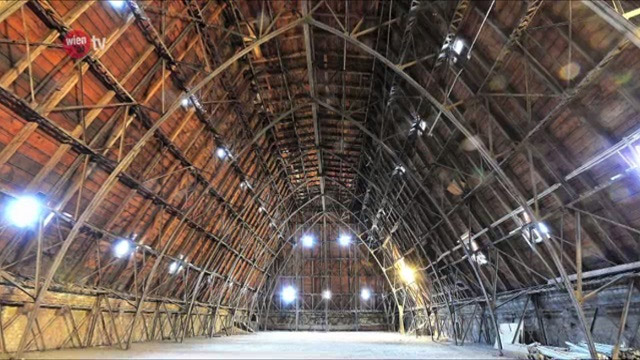Mitschrift
LIFE+ Alte Donau
Together for the Old Danube
The Old Danube is a unique recreation area. For the citizens of Vienna it is one of the most important local leisure areas in the middle of the city.
The Old Danube is situated in the municipal districts of Floridsdorf and Donaustadt. Some 30,000 people live within a one-kilometre radius.
Until 1870, the Danube river near Vienna was almost entirely unregulated and ran through a wetland area that spanned a width of several kilometres. The river sought its path through the wetland, resulting in changing riverbeds and continuous relocations of the river’s arms. In the 19th century, the Old Danube was the principal arm of the Danube. High water often led to major flooding in the district of Leopoldstadt near the city centre. In 1830 and 1862, devastating floods occurred and led to the Danube dig (Donaudurchstich), the first regulation of the river.
Since then, the Old Danube has no longer been connected to the Danube. Instead, it is now a 1.6 square kilometre urban lake which has remained a popular recreation and bathing area.
It contains around 3.7 million cubic metres of water and has an average depth of 2.5 metres. A naturally narrow section in the centre divides the Old Danube into two large basins:
the Upper Old Danube and the Lower Old Danube.
An island in the Lower Old Danube provides space for the largest lido in Europe: the Gänsehäufel.
As it is just a short underground ride away from the city centre, more than a million bathers visit the Old Danube every year. But the eight-kilometre long urban lake is also a valuable habitat and vitally important for animals and plants.
In order to develop and protect the urban lake in the long term, the City of Vienna - Municipal Department 45 "Water Management" launched the project LIFE+ Alte Donau, which is funded by the EU. The set of measures of the Municipal Department aims to sustainably maintain and improve the green oasis and leisure area for future generations.
Gerald Loew, MA 45 – Water Management:
The EU has a programme called LIFE - now LIFE+ - to co-fund environmental and economic showcase projects by up to 50 %. And we are taking part in this programme. It takes more than a year to present a project to the EU. There are several criteria according to which you submit a project and according to which a project is chosen - and we were selected. We receive up to 50 % funding for our planned measures. The EU sets great store by the fact that this is not only a project valuable to the region, in this case Vienna, but that it can serve as a showcase project for the entire EU. Others have to be able to replicate the project; this is very important to the EU.
Off:
It is important in order to avoid what happened in the 90s.
Gerald Loew, MA 45 – Water Management:
In the 90s, the Old Danube collapsed. In the past, lakes were used just the way they were: people constructed buildings, bathed themselves, even discharged their wastewater, or built a landfill site nearby. They did not think about what the water body needed or what was necessary to preserve such a natural habitat.
Off:
At that time, the water of the Old Danube contained too many nutrients. As a result, floating planktonic algae reproduced rapidly, causing important underwater plants to die off.
Gerald Loew, MA 45 – Water Management:
Within just a few months, the Old Danube turned into a red broth - the water took on a reddish-brown colour, because the floating algae were increasing so rapidly. It was ecologically dead.
Off:
It took a lot of effort to save the Old Danube and turn it into what it is now: a functioning water habitat in the middle of the city.
However, risks remain - the number of water sports enthusiasts and swimmers is ever increasing, as well as building development.
Gerald Loew, MA 45 – Water Management:
What's more, climate change leads to increasingly hot summers and drier and drier winters. This adversely affects the lake. To avoid what happened in the 90s, we introduced these measures.
Off:
A set of measures with various objectives at different sections of the Old Danube - for example, the development of the riverbank Donaufeld. 20 new bays, stairs and reed beds in the water were created.
Thomas Ofenböck, MA 45 – Water Management:
Due to over 150 years of intensive use, many riverbank areas have been heavily fixed. The LIFE project aims to introduce more natural structures. At the moment, about 25 % of the shores are near-natural riverbeds. Our objective is to increase this share to around one third. We used a combination of measures when renewing the stairs and access to the waterfront. We created areas for swimmers; on steep riverbanks, we built bays to make bathing access easier. At the same time, we tried to introduce near-natural areas into this section. This was done by building banks where reeds and canes were planted to make the shore more diverse. However, this measure does not only improve the scenery; it is also an ecological measure which provides habitats especially for juvenile fish and amphibians.
Off:
The declared aim is to expand the near-natural riverbank areas of the Old Danube to one third of the entire riverbank length in the long term.
Gerald Loew, MA 45 – Water Management:
There is no universal remedy for water bodies, no solution which definitely works. On the contrary, there are many different small-scale measures which, when combined, will result in a more stable, protected urban lake able to resist heat waves in the summer.
Off:
These measures are carried out on the riverbank, in the surroundings of the Old Danube and in the water itself. The plants of the Old Danube aren't exactly loved by swimmers, however.
Gerald Loew, MA 45 – Water Management:
After the collapse in the 90s, one water plant prevailed and now makes up over 90 % of all the plants found in the Old Danube: the Myriophyllum spicatum, a long, thin aquatic plant which spreads near the surface and which leads to problems with swimmers and boaters. In uninfluenced, natural water bodies, this is not the case. It works well, but it is vulnerable, just like a monoculture in the forest. This is why one of our projects in LIFE is to try and increase the diversity of aquatic plants. We are trying to establish low-growing alternatives or other water plants. On the one hand through our mowing management: we try to mow the plants in a way that enables light to penetrate to the river bed - that way, other plants can grow down there, because they need UV light to do so. On the other hand, we specifically plant aquatic plants.
Off:
Hot summers are hard on the urban lake. The pH level needs regulation - without chemicals, naturally.
Gerald Loew, MA 45 – Water Management:
Another one of our projects of the EU LIFE project is to build a biological filter in the north, in the Water Park. This will treat the water of the New Danube, making it ready for the Old Danube.
That means that the water passes through calcareous rocks, creating a calcium buffer in the Old Danube. Thus, calcium is stored in the water all year round and helps remedy one of the most critical issues at the moment.
Thomas Ofenböck, MA 45 – Water Management:
Behind me: the construction site of the soil filter. It serves the purpose of taking water from the New Danube, which is then filtered in the soil filter, enriched with calcium and released into the Water Park or the Old Danube. The soil filter has two main functions. One is to increase calcium levels in the Old Danube. The other is to further extract nutrients from the water sent to the soil filter. The water in the New Danube is already poor in nutrients, but the aim is to decrease nutrient concentration even further; especially phosphor, which is the minimum factor - the determining factor for plant growth. So the objective is to have as few nutrients as possible and not add any more to the Old Danube. This is a real pilot project and an innovation, but the measure is also of experimental nature, as there are no previous experiences for such facilities.
Off:
Many measures on the riverbanks concern the tree population around the Old Danube. A water body does not only need to work ecologically; it is also a cultural property and thus needs to be preserved.
Gerald Loew, MA 45 – Water Management:
For example, we planted many black poplars, white poplars and willows - riparian plants, to preserve the tree scenery and provide shade for the water.
Off:
Measures were also taken regarding the reeds.
Gerald Loew, MA 45 – Water Management:
Reeds are essential, because they serve as a buffer for the Old Danube, as storage. And they help balance temperature, which is important for living creatures. However, reeds have one special characteristic: they change ground into forest. This means that when reeds die, the plant remains drop to the ground and become soil. That way, a reed bed develops, grows out of the water and, in time, becomes forest. But we want to preserve the water of the Old Danube. We have fixed borders and a limited reed stock. We want reeds to grow, because of the beneficial effects, but we want to push back this tendency of drying up. How do you do that? You have to dig small gateways and small ditches across the water. This enables young reeds to grow, but ultimately removes soil.
Off:
Some measures of the EU project LIFE+ will remain unnoticed by the many guests of the Old Danube. Others are aimed at attracting their attention. Six new boards and 20 information columns form a system that guides visitors some 13 kilometres around the Old Danube. An additional smartphone app provides information about the Old Danube, its colourful past, water-engineering measures and rich diversity of plants and animals.
Off:
For example, about the beaver, which lived here in the past and has now returned. It is a part of the water environment and diligently helps shape it. By building its lodges, it provides a basis of existence for numerous other species in and on the water. But the project also provides many benefits for people looking for rest and relaxation. At the Upper Old Danube, the ArbeiterInnenstrand provides a new, extensive natural sunbathing lawn.
Gerald Loew, MA 45 – Water Management:
For the first time ever since the creation of the Old Danube, such an extensive lawn has been given back to the public. In recent centuries, space was always taken from the population; now we've managed to give something back.
Off:
Festivities for the citizens of Vienna. On Biodiversity Day, the Municipal Department for Environmental Protection in Vienna raises awareness of the diversity of the environment around the Old Danube.
Gerald Loew, MA 45 – Water Management:
Such festivities were enabled by the fact that the Old Danube is a near-natural water body. We informed the public about the numerous and diverse species living here. We had a booth in the Kaiserwasser so that people could find out about the different species. We had experts both giving advice and showing people the various species, how they live and what they need. We had a snorkelling excursion with experts to look at fish and plants. Information was also provided during boat tours. This was information on the diverse environment of the Old Danube and its surroundings.
Off:
A set of interdependent measures of the EU project LIFE+ ensures that people can use the Old Danube without interruption, and that they can swim and enjoy their leisure time as well as the beauty of the Old Danube. The magic word is integrative water management. The aim is to implement measures within a particular domain, together with everybody in the local area, and to have several measures leading to a common objective.
Gerald Loew, MA 45 – Water Management:
This is only possible with a set of integrative measures - on the water and riverbanks, for plants; also for the businesses in the surrounding area and for the citizens who come here to go swimming. If they act responsibly - don't leave their waste behind, don't go swimming right after applying sunscreen and take a shower beforehand - so if they act responsibly, the urban lake will be fine. But you have to inform people about that. You have to tell them, "Look, this is something special; you need to take care of it, for there are fish and plants in it" or "These are natural riverbanks, please don't destroy them" or "Please take care of it so that your children will be able to enjoy it, as well."
Off:
If that is the case, the Old Danube doesn't need to shun comparison with famous Austrian lakes.
Gerald Loew, MA 45 – Water Management:
Compared to other lakes, this one is incredible, because we are in the middle of the city. Compared to Woerthersee, for example, we have better visibility depth. Our water quality is first class, similar to the lakes Mondsee, Attersee or Woerthersee. In the middle of a city! It's astounding, for we have less favourable conditions than any of those other lakes, which are also bigger and thus have more buffer space. But still, our water quality is exceptional: good visibility depth, pH-value and temperature.
Just... wonderful!
Archiv-Video vom 06.10.2016:
Bitte beachten Sie, dass die Inhalte (Termine, Kontaktmöglichkeiten,...) möglicherweise nicht mehr aktuell sind.
LIFE plus Alte Donau, Together for the Old Danube
The Old Danube is a unique recreation area. For the citizens of Vienna it is one of the most important local leisure areas in the middle of the city. In order to develop and protect the urban lake in the long term, the City of Vienna − Municipal Department 45 "Water Management" launched the project LIFE+ Alte Donau, which is funded by the EU. The set of measures of the Municipal Department aims to sustainably maintain and improve the green oasis and leisure area for future generations.
Länge: 20 Min. 14 Sek.
Produktionsdatum: 2016
Copyright: Stadt Wien
















